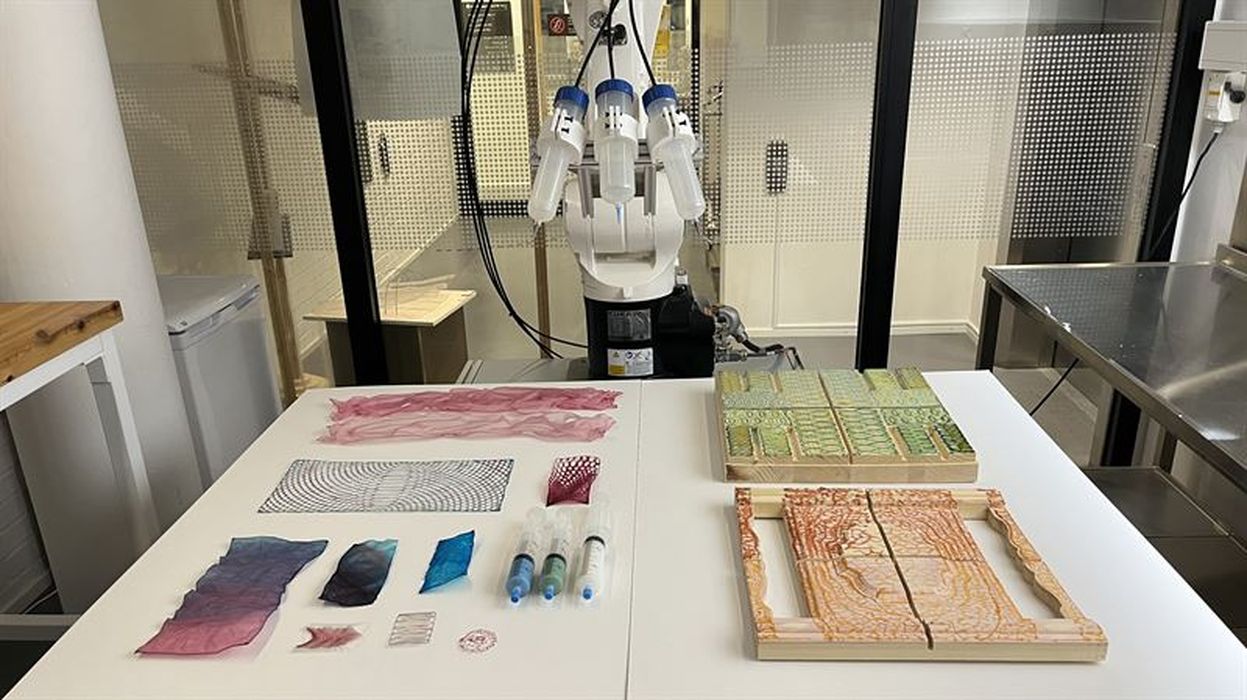
Researchers have developed a new eco-friendly material that might be useful for construction 3D printing.
Construction 3D printing is a relatively new practice, and it involves extrusion of concrete mixes through a robotic system. There are now several companies offering building-sized construction 3D printers capable of making large structures.
The problem with most of these technologies is that they use concrete, one of the worst polluting substances widely used on the planet.
Concrete is a mix of water, cement and stone, and the problem lies in the production of cement component. The raw materials to produce cement must be heated to a scorching 1450C to produce “clinker”, which is then mixed with gypsum to form cement powder.
It’s the extreme heat that’s the problem: most cement production facilities burn fossil fuels to generate that heat. Cement production generates about 4% of the world’s CO2 emissions, or about 1.5 gigatons of CO2.
If there were a way to use something other than cement these emissions could be sharply reduced.
The researchers at Chalmers University of Technology in Sweden looked at the use of nano cellulose as a 3D printing material.
Nano cellulose is already used in 3D printing. Specifically, it’s used to make certain types of hydrogels that are commonly used in bioprinting. The hydrogels form a support structure for syringe injections of material.
Hydrogels are certainly not suitable as a building material, however.
The researchers decided to dry out the cellulose-based hydrogels, and mix in alginate. Alginate is a molecule found in many plants, but is most commonly sourced from seaweed. The alginate additive creates some flexibility in the resulting material after drying, which enables the possibility of 3D printing. Pure cellulose is not going to flow very well at all.
The researchers were able to 3D print sample objects using the new material. They explain:
“The energy efficient process relies on the shear thinning properties of the nanocellulose hydrogel. When you apply pressure it liquifies allowing it to be 3D printed, but when you take away the pressure it maintains its shape. This allows the researchers to work without the energy intensive processes that are commonplace in the construction industry.”
The resulting material is extremely interesting because not only can alginate be easily obtained from renewable sources, but so can the cellulose. The new material should be very sustainable.
However, can it replace concrete as a 3D printing material for construction applications?
It seems they are focusing on architectural elements first, rather than structural elements. They suggest using the material to produce items such as “lightweight room dividers, blinds, and wall panel systems”, or “tiles to clad walls, acoustic elements for damping sound.”
There is much unknown at this point, as the researchers are still exploring the properties of the new material. As a result, we don’t truly know what applications could be possible.
I’m hoping that some variation of this material could become a standard construction 3D printing material in the near future.
Via Chalmers
